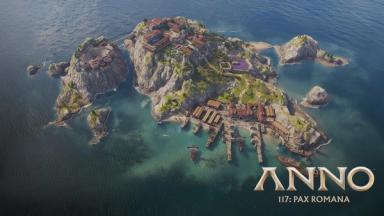Monster Hunter Wilds Optimized Settings


Monster Hunter Wilds is another one of Capcoms frustrating releases. On the one hand, it is an excellent videogame that will certainly end the year as a GOTY contender, while also being the most successful release in the entire franchise.
On the other hand, Monster Hunter Wilds is a grim reminder of the extremely poor state of PC ports in the AAA landscape, with a few notable exceptions (praised be Kingdom Come Deliverance II).
READ: Monster Hunter Wilds: How to capture monsters
The performance issues are bad enough for the game to be sitting at 53% Positive Reviews on Steam at the time of writing this, with the overwhelmingly majority of those complaining exclusively about performance issues and crashes.
With that in mind, here is our best attempt at creating our Monster Hunter Wilds Optimized Settings.
Monster Hunter Wilds Optimized Settings
For reference, we're running a game on a decently beefy computer. Here are our specs:
- Ryzen 7 7800x3d CPU
- 32GB of DDR5 6000MHZ RAM
- RTX 3080 10GB GPU
- 1TB NVME SSD
The game runs mostly at 60 fps on our system with the default settings of High mixed with DLSS Balanced, but it is not a remotely smooth experience. We tinkered for a while searching for the balance between a reasonable image and smoother moment to moment gameplay.

To start off, we recommend capping your framerate at 60, regardless of if you have a GSYNC/Freesync display. The higher your framerates, the more noticeable the drops and stutters will be. In our experience, the in game framerate cap works fine for this.
Leave the game running on Borderless Window mode, as using exclusive fullscreen is causing crashing problems to a lot of people.
READ: Monster Hunter Wilds weather system explained
Advanced Graphics settings are many, so lets get through them page by page. In page one, we're using the settings shown below. Keep Ray Tracing off regardless of your specs, and adapt Texture and Filtering Quality depending on your GPU.

As long as you are running anything better than a 3070, High Quality should be fine. Anything older or weaker than that should stick to Medium Settings, but be warned, it will look terrible.
Our second page settings are specific to our system. Monster Hunter Wilds is extremely heavy on both the CPU and GPU, but since we have a lot of CPU leeway, we cranked the settings that depend on that component all the way up.

If your CPU is on the weaker side of things, turn the Render Distance down as much as you can, and reduce the Shadow Distance. If GPU is your main bottleneck, consider turning down Grass/Tree Sway, Wind Simulation Quality, Water Effects, and Contact Shadows.
These are the settings that will have the least impact in your overall image quality, while giving you some much needed minor FPS boosts.
For our third and final page, it is simple. Turn everything off.. All these post-process effects will have an impact on your GPU, and they're essentially eye candy. They won't considerably change your final visual experience, and if you turn them off early on, you won't miss them at all.

We kept SSSS Scattering on as it isn't too heavy and does make a bit of a difference in cutscenes.
If you are one of the few people with a 16GB or higher VRAM GPU, we recommend downloading the High Resolution Texture Pack and trying it our for yourself. The game's High textures are too low for a 2025 AAA release, so this a welcome addition.
NVIDIA Specific Recommendation
If you are running a NVIDIA GPU which supports DLSS, force the most recent Preset K of DLSS through the NVIDIA App Override. Doing so will get you a much better image for each mode, allowing you to go down from Quality to Balance, or Balance to Performance without noticing much of a difference.
This guide will hardly make the game a fluid and good looking game, but it will help you get the best results you can out of your own system, at least until the game gets the thorough patches it requires.





